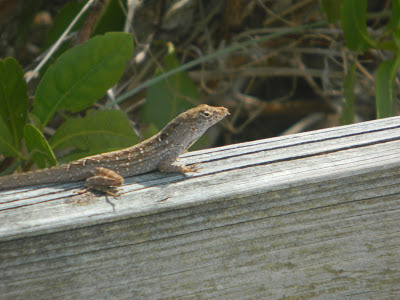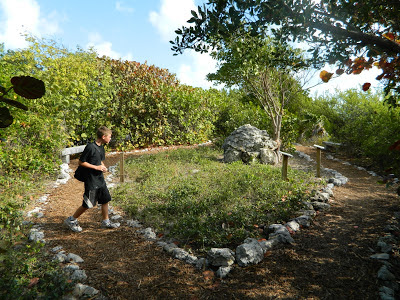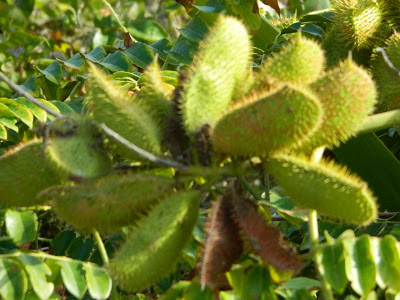So Bahia Honda turned out to not to be all about fun. I had a report I had to make on it. So here is my photo report. We walked the whole south side of the island!
Calusa beach
Calusa beach viewed from the old bridge
Someone else escaped Boot Key Harbor for a day
Diamondback Anoles
Invasive species, the Iguanna
If you look close on the wall you will find my hiding spot
The butterfly garden
Gulf Fritillary
Miami Blue Butterfly
The Miami blue (Cyclargus thomasi bethunebakeri) is a small butterfly that is native to coastal areas of southern Florida. Once very common throughout its range, it has become critically endangered, and may be the rarest insect in the United States. Its numbers have recently been increased by a captive breeding program at the Florida Museum of Natural History.
Zebra Long Wing
Brown Pelican
Portugese Man of War
Anyone unfamiliar with the biology of the venomous Portuguese man-of-war would likely mistake it for a jellyfish. Not only is it not a jellyfish, it's not even an "it," but a "they." The Portuguese man-of-war is a siphonophore, an animal made up of a colony of organisms working together.
The man-of-war comprises four separate polyps. It gets its name from the uppermost polyp, a gas-filled bladder, or pneumatophore, which sits above the water and somewhat resembles an old warship at full sail. Man-of-wars are also known as bluebottles for the purple-blue color of their pneumatophores.
The tentacles are the man-of-war's second organism. These long, thin tendrils can extend 165 feet (50 meters) in length below the surface, although 30 feet (10 meters) is more the average. They are covered in venom-filled nematocysts used to paralyze and kill fish and other small creatures. For humans, a man-of-war sting is excruciatingly painful, but rarely deadly. But beware—even dead man-of-wars washed up on shore can deliver a sting.
Muscles in the tentacles draw prey up to a polyp containing the gastrozooids or digestive organisms. A fourth polyp contains the reproductive organisms.
Man-of-wars are found, sometimes in groups of 1,000 or more, floating in warm waters throughout the world's oceans. They have no independent means of propulsion and either drift on the currents or catch the wind with their pneumatophores. To avoid threats on the surface, they can deflate their air bags and briefly submerge.
From the road looking toward Sandspur Beach
Florida Thatch palm
(Thrinax radiata)
- Also known as the Silk-top thatch palm
- One of the few palms native to Florida Keys
- Has a slender grey trunk with dark green fan leaves at the top. Leaves are about 3ft long with drooping tips at the end. It produces white flowers that grow on the yellow stems to 3-4ft long.
- This slow growing palm can get up to 20ft tall.
X
Florida Silver Palm
(Coccothrinax argentata)
- Small, slow-growing fan palm with leaves that are dark blue-green above and silver-colored below
- Flowers white small on light orange branches. Fruits globose, half an inch in diameter, green turning purple or black when ripe.
- The Endangered Florida Key Deer feed on the fruits of the silver top palm
Seven~Year Apple
(Casasia Clusiifolia )
- reaches a height of 20'.
- leathery leaves are up to 6'' long.
- fruits resemble small pears and are black when ripe ~taste like licorice.
- small white flowers are very fragrant
BLACK MANGROVE
(AVICENNIA GERMINANS)
- It is a important land builder,And masses of air roots collect silt and debris.
- Fruit resembles lima beans and sprout on the tree.
- Fragrant flowers are the main source for mangrove honey.
RED MANGROVE
(RHIZOPHORA MANGLE)
- This will grow in shallow salt water areas on curved prop roots.
- Valuable as a land builder.
- Cigar shaped seedling develops on the tree.
- It has a small pale yellow flower.
WHITE MANGROVE
( LAGUNCULARIA RACEMOSA)
- One of three mangrove species.
- It prevents shoreline erosion and even builds land.
- It grows landward of the other two mangrove species.
- Seeds germinate while on the tree.
Tidal pool located within Bahia Honda
GREEN BUTTONWOOD
(Conocarp erectus )
- It grows as a shrub or a tree to 30'.
- It may be the most numerous shoreline tree in the Key's.
- Hard, dense wood used by early settlers
- Fruits resemble old fashioned round buttons
Black Torch
(Erithalis fruticosa)
- Shrub or small tree, usually grows behind primary dune.
- Very tolerant of salty conditions.
- Flowers are white and star-shaped.
- Fruits are black when ripe.
Wild Bamboo
(lasiacis divaricata )
- Woody main stem may reach a length of 12'.
- Leaf blades are narrow and 2-8'' long.
- Native to south Florida, the Keys and the bahamas
Golden Beach Creeper
(Ernodea littoralis)
- Requires very little water and can grow in poor soils.
- Vine~like shrub with curving branches which grows close to the ground.
- Grows on the edge of plant communities in full sun and salt sprays.
Lantana
Lantana Involucrata
- Shrub grows to 5` tall.
- White flowers grow in clusters.
- Small fruits are lavender.
- Light green leaves are rough and smell like sage when crushed.
Bahama Nightshade
(Solanum bahamense)
- Shrub,grows to 6` tall.
- Flowers are purple with yellow stamens.
- Leaves are 3-6" long and wrinkled.
- Fruits are red and poisonous.
- Related to tomatoes and eggplants.
Blackbead
( Pithecellobium Keyense)
- Shrub found on the back~dune.
- Fragrant fuzzy flowers.
- Bean pods twist open when ripe to reveal shiny black seeds surrounded by bright red arils.
- Seeds used to make necklaces.
Sleeping Morning
(Waltheria indica)
- Woody shrubs ,grows to 6`.
- leaves covered with soft white wooly hairs.
- yellow flowers grow in clusters and open late in the morning
Wild poinsettia or Painted-leaf
(Poinsettia cyathophora)
- Resembles the cultivated variety of poinsettia.
- perennial herb with thin leaves that are all or partly red.
- found along roadsides in hammocks and coastal areas.
7 Mile Bridge viewed from the east end of Bahia Honda
Bahia Honda Ohio channel bridge. We walked the whole south side bridge to bridge
Sunset as we dinghy'd back to s/v Gemini Dreams



































































No comments:
Post a Comment